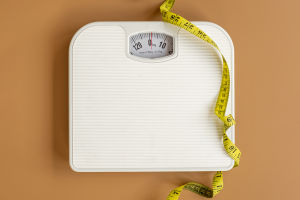Cup Material Overview
Drinking water is a matter of survival and health, and the cup you use directly affects this important matter! If you use the wrong cup, it's like drinking poison!
Today, let's uncover the secrets of various types of cups one by one!
1. Stainless Steel Cup
Stainless steel cups are made of alloy. Under normal use, the amount of chromium released in stainless steel tableware that meets standards is minimal, so there is no need to worry about its impact on human health. When improperly used, inferior stainless steel products may release heavy metal substances, posing health risks.
In daily use, using a stainless steel cup to hold ordinary water is not a problem, but try not to fill it with acidic beverages such as juice, coffee, or carbonated drinks. When cleaning stainless steel cups, avoid using strong oxidative substances such as baking soda or bleach, as these substances can also react chemically with stainless steel.
2. Ceramic Cup
Ceramic cups can be divided into two types:
2.1 Unglazed and colorless interior:
Unglazed ceramic cups, especially those with colorless interiors, are the preferred choice for drinking water. Not only are they made of safe materials and resistant to high temperatures, but they also have relatively good heat preservation effects, making them suitable for drinking hot water or tea.
2.2 Colorful:
Does your cup have beautiful colors and cute patterns? If so, replace it as soon as possible. The colorful patterns on ceramic cups are pigments, which may hide safety hazards.
Especially when the pigments on the inner wall are applied on the glaze layer, when the cup contains hot water or beverages with high acidity or alkalinity, toxic heavy metal elements such as lead in these pigments may dissolve into the liquid, posing harm to the human body.
3. Glass Cup
Among all types of cups, glass cups are the healthiest.
Glass cups do not contain organic chemicals during the firing process. When people use glass cups to drink water or other beverages, they don't have to worry about chemicals being ingested. Moreover, the smooth surface of glass cups makes them easy to clean, and bacteria and dirt are not easily bred on the cup walls, so using glass cups to drink water is the healthiest and safest option.
4. Plastic Cup
Plastic cups are also unpopular. Because plastics often contain plasticizers, which contain some toxic chemicals, when hot water or boiling water is poured into plastic cups, toxic chemicals are easily diluted into the water.
Moreover, the internal microstructure of plastic has many pores, which make it easy to hide dirt. If not cleaned properly, bacteria are easily bred. Therefore, when choosing plastic cups, be sure to choose water cups made of edible-grade plastics that meet national standards.
5. Enamel Cup
Enamel cups are made by enameling at high temperatures of thousands of degrees Celsius and do not contain harmful substances such as lead, so they can be used with confidence.
Although enamel cups contain relatively stable metallic substances, they may dissolve under acidic conditions. Therefore, it is best not to use enamel cups to store acidic beverages such as orange juice for a long time, otherwise, even ordinary water may contain metallic substances. In addition, the surface of enamel cups is easily damaged after being bumped, which may release harmful substances, so they should be eliminated decisively.
6. Disposable Paper Cup
Disposable paper cups may seem hygienic and convenient, but in fact, the qualification rate of products cannot be judged, and whether they are clean and hygienic cannot be discerned with the eye.
Some paper cup manufacturers add a large amount of fluorescent agents to make the cups look whiter. However, this fluorescent substance can cause cell mutations and become a potential carcinogen once it enters the human body. From an environmental perspective, it is still advisable to use disposable paper cups as little as possible.


